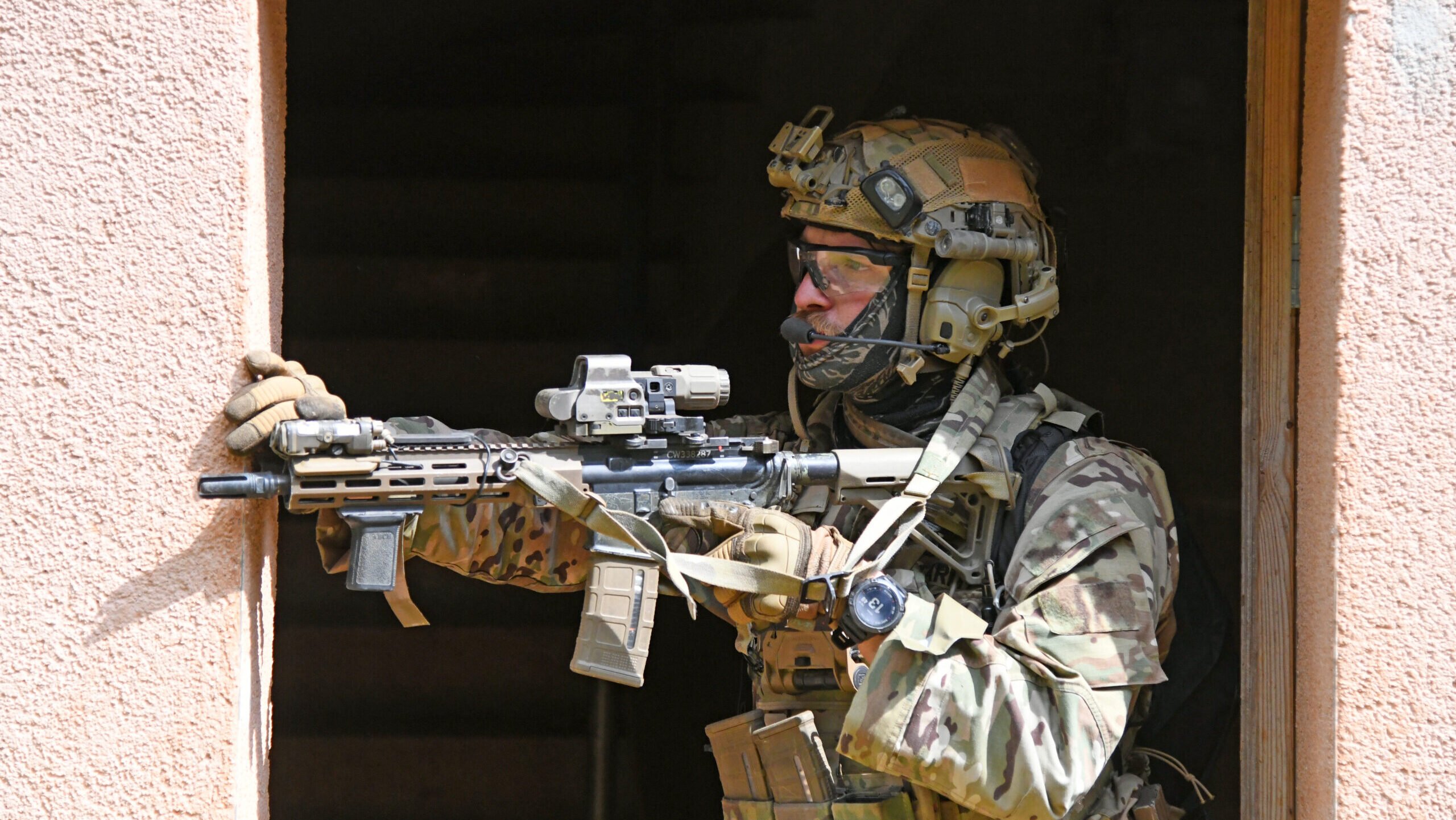
U.S. Army Soldiers with Bravo Company, 1st Battalion, 10th Special Forces Group conduct small unit tactic training at the Local Training Area and MOUT Site (Military Operations in Urban Terrain Site) on August 29, 2023, Baumholder, Germany (U.S. Army Photo by Ruediger Hess)
WASHINGTON — Grappling with a smaller force and new weapons, the US Army today unveiled its formal plan to chop about 24,000 jobs, including thousands of special operations positions, and make way for different formations.
“We are transforming our force structure. We are transforming our weapons systems through our modernization programs and what we’ve done … is make room for some new formations like Multi-Domain Task Forces but also… directed energy [Maneuver Short-Range Air Defense] M-SHORAD,” Army Secretary Christine Wormoth told reporters at Defense Writers Group breakfast.
Wormuth, alongside Army Chief Gen. Randy George, spoke to reporters today ahead of the publication of an “Army Force Structure Transformation” white paper, which was informed by what the service called a recent Total Army Analysis. The duo explained that after spending a significant amount of “quality time” briefing lawmakers, they are planning for a force with 470,000 active-duty soldiers — significantly less than the 494,000 soldiers the force is structured to support today but more than the currently authorized number of 445,000 soldiers.
That means the Army is cutting some 32,000 positions, but are adding approximately 7,500 others back in what the white paper called “high priority formations.” The paper made it clear that the cuts are to planned spaces, and the service is not “asking current soldiers to leave.”
To get to the 470,000 number, service leaders opted to cut a number of unfilled jobs like media outreach and psychological operations, as well as leveling a 3,000-position hit to special operations posts. George said that figure was settled on after “months and months” of consultation with US Army Special Operations Command and US Special Operations Command.
That plan went up to Defense Secretary Llyod Austin for approval and reflects the “excess” number of special operations spots created when the service was focused on counterinsurgency and counterterrorism operations, rather than the large-scale combat for which the Pentagon is preparing, Wormuth added.
But it’s not all cuts ahead for the Army. It is also planning for a future with an ever-increasing number of aerial drones and weapons designed to shoot them down. Accordingly, structure changes also include:
- Four additional Indirect Fire Protection Capability (IFPC) battalions;
- Nine counter-small UAS (C-sUAS) batteries nested within IFPC and division air defense battalions; and
- Four additional M-SHORAD battalions.
The Army paper said that another one of the “most significant new force structure additions” is the rounding out of a planned five total Multi-Domain Task Forces (MDTFs). The service has been rolling out MDTFs in recent months and says that when all is said and done, three will be assigned to US Army Pacific, one will go to US Army Europe-Africa and the last will “likely focus” on US Central Command’s “area of responsibility.
The Army expects the task forces to “increase the depth and scale at which Army forces can protect Joint and Coalition forces, conduct intelligence gathering and synchronization, deliver non-kinetic space and cyber effects to shape operations, and deliver long-range fires in support of joint force maneuver,” the paper says.












